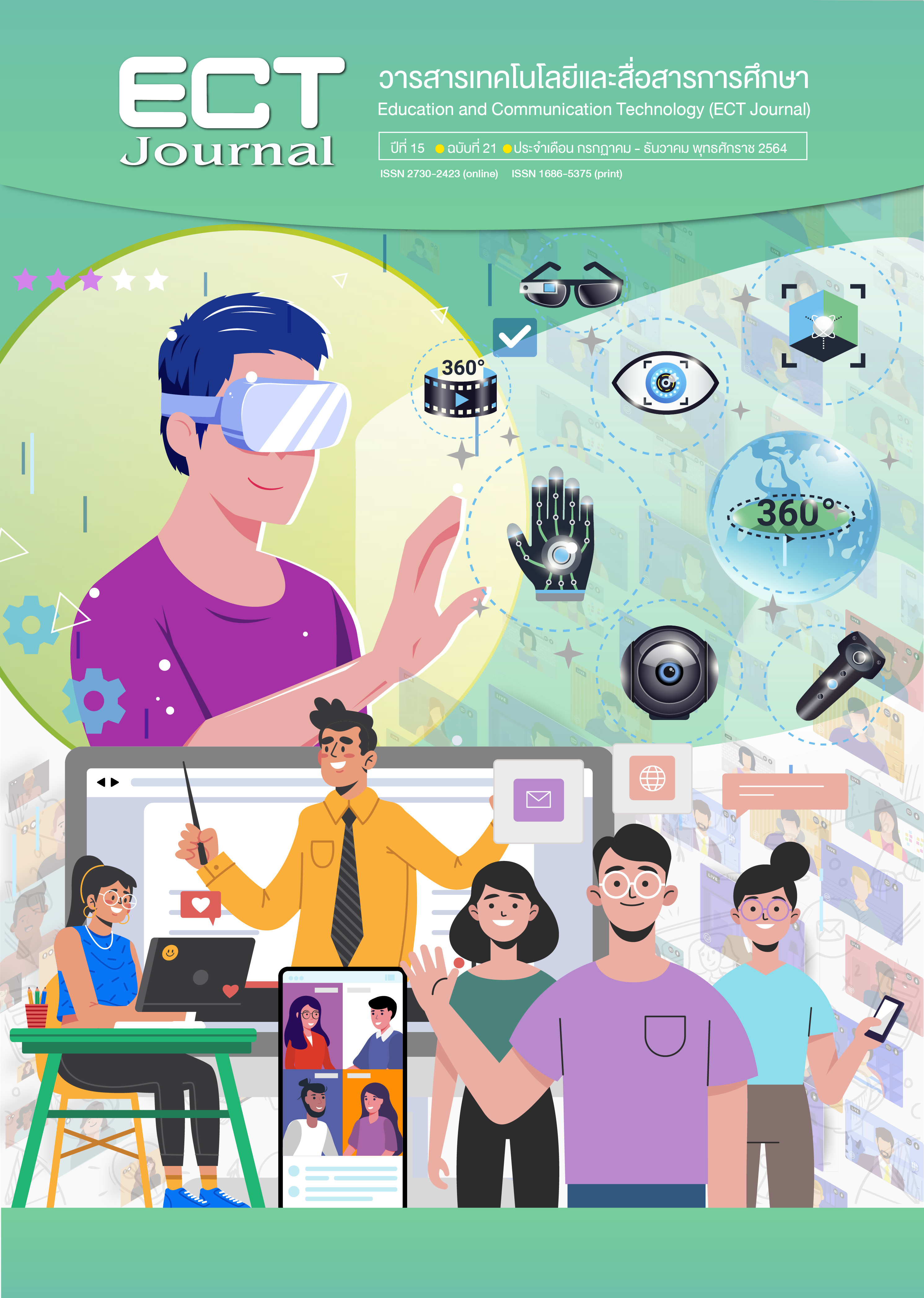Effectiveness of Flipped Classroom Learning Model with Active Learning Approach to learning behavior, Learning Achievement and Satisfaction of Nursing Students, Suranaree University of Technology
Keywords:
Learning model, Flipped classroom, Active Learning, Nursing studentsAbstract
This pre-experimental research, one group pretest-posttest design, aims to 1) study the learning behavior of learner by using a flipped classroom learning model with active learning approach (FCM-ALA), 2) study of student’s satisfaction and 3) compare pretest and posttest of learning achievement. The sample of the study were 73 nursing students who enrolled in 701102 Health and Nursing Informatics course, Institute of Nursing at Suranaree University of Technology of the third semester, academic year 2016, selected by purposive sampling. The research instruments were 1) a flipped classroom learning model with active learning approach 2) an observational form of learners’ participation 3) a satisfaction assessment formfor students and 4) anachievement test. The data were analyzed by using descriptive statistic such as mean, standard deviation and content analysis.
The results were as follows: 1) the learning behaviors of learners were enthusiastic and engaged in meaningful learning., 2) the level of learners’ satisfaction was at a high level (M = 4.05, SD = 0.58) and 3) the posttest of the learning achievement of FCM-ALA was higher than before using this model. The effect of FCM-ALA improves cognitive skills and promotes life skills such as planning to allocate more time and responsibility to themself.
References
กิตติพงษ์ พุ่มพวง และทิพรัตน์ สิทธิวงศ์. (2561). การพัฒนากิจกรรมการเรียนการสอนแบบห้องเรียนกลับด้านร่วมกับการจัดการเรียนรู้แบบร่วมมือสําหรับนิสิตระดับอุดมศึกษา. วารสารศึกษาศาสตร์มหาวิทยาลัยนเรศวร, 20(2), 1-11. https://so01.tci-thaijo.org/index.php/edujournal_nu/article/view/115389
นิชาภา บุรีกาญจน์ และเอมอัชฌา วัฒนบุรานนท์. (2557). ผลการจัดการเรียนรู้วิชาสุขศึกษาโดยใช้แนวคิดแบบห้องเรียนกลับด้านที่มีผลต่อความรับผิดชอบและผลสัมฤทธิ์ทางการเรียนของนักเรียนมัธยมศึกษาตอนต้น. วารสารอิเล็กทรอนิกส์ทางการศึกษา, 9(4), 253-267. http://www.edu.chula.ac.th/ojed/index.php/home/article/view/574
ภัทราดา เอี่ยมบุญญฤทธิ์, ชลธิชา ภูริปาณิก, และฐิติชัย รักบำรุง. (2563). การสอนอ่านเชิงวิเคราะผ่านกระบวนการเรียนรู้แบบ Active learning เพื่อพัฒนาทักษะการคิดวิเคราะห์ของเด็กไทยยุค Gen Z. วารสารศึกษาศาสตร์ มหาวิทยาลัยบูรพา, 31(3), 1-11.
รัฐสภา แก่นแก้ว, ณรงค์ สมพงษ์, และณัฐพล รำไพ. (2563). การพัฒนารูปแบบห้องเรียนกลับด้านด้วยกระบวนการเรียนรู้แบบสร้างสรรค์เป็นฐาน เพื่อส่งเสริมทักษะการสร้างสรรค์ผลงานของนักศึกษาด้านนิเทศศาสตร์ในระดับปริญญาตรี. วารสารชุมชนวิจัย มหาวิทยาลัยราชภัฏนครราชสีมา, 14(2), 189-203. https://so01.tci-thaijo.org/index.php/NRRU-MJo/article/view/242242
วิจารณ์ พานิช. (2556). ครูเพื่อศิษย์สร้างห้องเรียนกลับทาง (พิมพ์ครั้งที่ 3). มูลนิธิสยามกัมมาจล.
สำนักงานคณะกรรมการการอุดมศึกษา. (2552). กรอบมาตรฐานคุณวุฒิระดับอุดมศึกษาแห่งชาติ พ.ศ. 2552. http://www.mua.go.th/users/tqf-hed/news/FilesNews/FilesNews2/news2.pdf
อาทิตย์ กลีบรัง, มนัสรี สังข์เผื่อน, เสาวภา เสารีรัมย์, และทศพล เอี้ยวเจริญ. (2561). การพัฒนารูปแบบจัดการเรียนรู้แบบห้องเรียนกลับด้านสําหรับนักศึกษาฝึกอาชีพในสถานประกอบการ. วารสารวิจัยและนวัตกรรมสถาบันการอาชีวศึกษากรุงเทพมหานคร, 1(1), 48-55. https://so06.tci-thaijo.org/index.php/ivebjournal/article/view/243359
Akcayir, G., & Akcayir, M. (2018). The flipped classroom: A review of its advantages and challenges. Computers & Education, 126, 334-345. https://doi.org/10.1016/j.compedu.2018.07.021
Ausubel, D. G. (1963). Cognitive structure and the facilitation of meaningful verbal learning. Journal of Teacher Education, 14(2), 217-222. https://doi.org/10.1177/002248716301400220
Bergmann, J., & Sams, A. (2014a). Before you flip, consider this. The Phi Delta Kappan, 94(2), 25. https://doi.org/10.1177/00317217120940026
Wiginton, B. L. (2013). Flipped instruction: An investigation into the effect of learning environment on student self-efficacy, learning styles, and academic achievement in an algebra I classroom [Doctoral dissertation, The University of Alabama]. The University of Alabama Institutional Repository. https://ir.ua.edu/handle/123456789/1823
Downloads
Published
How to Cite
Issue
Section
License
Copyright (c) 2021 มหาวิทยาลัยสุโขทัยธรรมาธิราช

This work is licensed under a Creative Commons Attribution-NonCommercial-NoDerivatives 4.0 International License.
1. ทรรศนะและข้อคิดเห็นใด ๆ ที่ปรากฏอยู่ในวารสาร ECT Education and Communication Technology Journal เป็นของผู้เขียนโดยเฉพาะ สำนักเทคโนโลยีการศึกษา มหาวิทยาลัยสุโขทัยธรรมาธิราช และกองบรรณาธิการไม่จำเป็นต้องเห็นพ้องด้วย
2. กองบรรณาธิการของสงวนลิขสิทธิ์ในการบรรณาธิการข้อเขียนทุกชิ้น เพื่อความเหมาะสมในการจัดพิมพ์เผยแพร่






